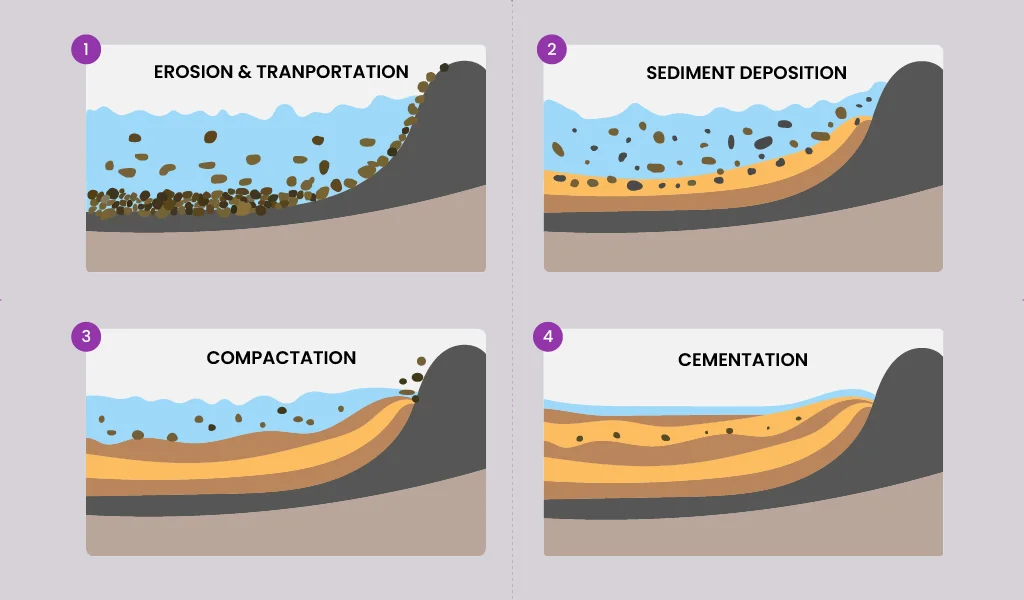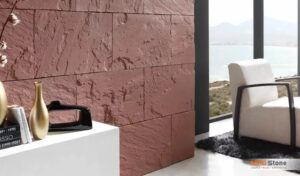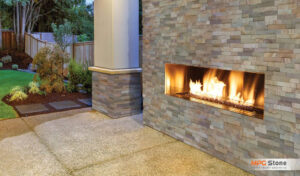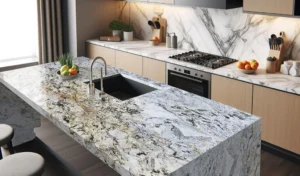Sandstone has been a widely used stone material in various industries for hundreds of years now. From household paving to some sculptures as well, have you ever given it a thought that how is sandstone formed? It is a material that can be millions of years old, and each grain of this stone can be a part of deserts, mountain ranges, and beaches of old times.
Sandstone is primarily a sedimentary rock formed mostly by sand grains that are composed primarily of quartz. This rock is formed by the compaction and cementation of these materials. It is a natural stone material that boasts natural qualities such as durability and uniqueness as it is crafted by Mother Nature itself.
So if you are amused by the natural qualities and a brief history and formation of sandstone, then this blog post is for you. In this, we will get you through the details on sandstone formation to give you a clear idea about this amazing material that can be found around us so easily.
The Building Blocks of Sandstone: Sedimentary Rocks
What are sedimentary rocks?
Sedimentary rocks is the name derived from the materials or sediments it is formed from, which are loose materials that are or have been transported to a place due to various reasons such as wind, gravity, or water. These rocks are formed when these sediments are compacted and accumulated at a porous place.
Types of sedimentary rocks:
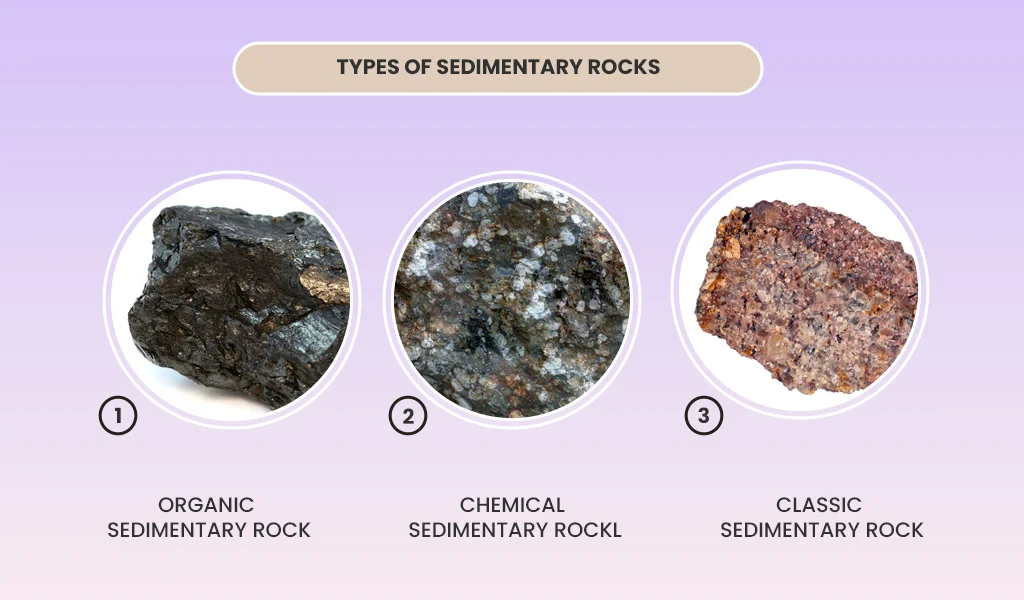
There are mostly 3 types of sedimentary rocks:
- Classic: These rocks are made up of pre-existing rocks, and their names are derived from the size of the materials and grains they are formed from, such as sandstone, which is a classic sedimentary rock named after it is made from sand-sized grains.
- Chemical: These rocks are named after the minerals and particles they are made of and are created when these minerals precipitate; for example, limestone tiles is named as it is composed of calcium carbonate.
- Organic: As suggested by the name, these sedimentary rocks are formed by the remains of those organisms that were once alive in this world, like shells and much more.
The role of weathering and erosion:
Weathering and erosion are two main components in the formation of sedimentary rocks, as they include the breaking down and transportation of essential minerals and rocks from one place to another. For example, wind will carry away particles from one place, and rain will help in breaking down it in pieces to help with sandstone formation.
How does sandstone form: A Step-by-Step Guide
The sandstone formation is not a simple process but a series of steps that are to be followed in order to create a sandstone rock, which are as follows:
- Sediment deposition: During sandstone slabs formation, sediment deposition means the movement and laying down of sediments at one place, and it usually occurs when the energy that was previously flowing these elements from one place to another becomes too weak or either stops to further move them. These sediments are then deposited at one place and then converted into sand dunes.
- Compaction: When we ask how is sandstone formed, then compaction is one thing that comes up first, which includes a compaction or pores put up by water or sediments on the sediments below that form a rock. Some other examples include travertine and limestone.
- Cementation: Cementation is the last stage of sandstone formation, which includes crystellization of minerals by which these rocks are formed in the potres of sedimentary rocks. In this process, sedimentary rocks stomp together and then harden when the water is forced out of these sediments after a squeeze.
Types of sandstone: Based on Composition
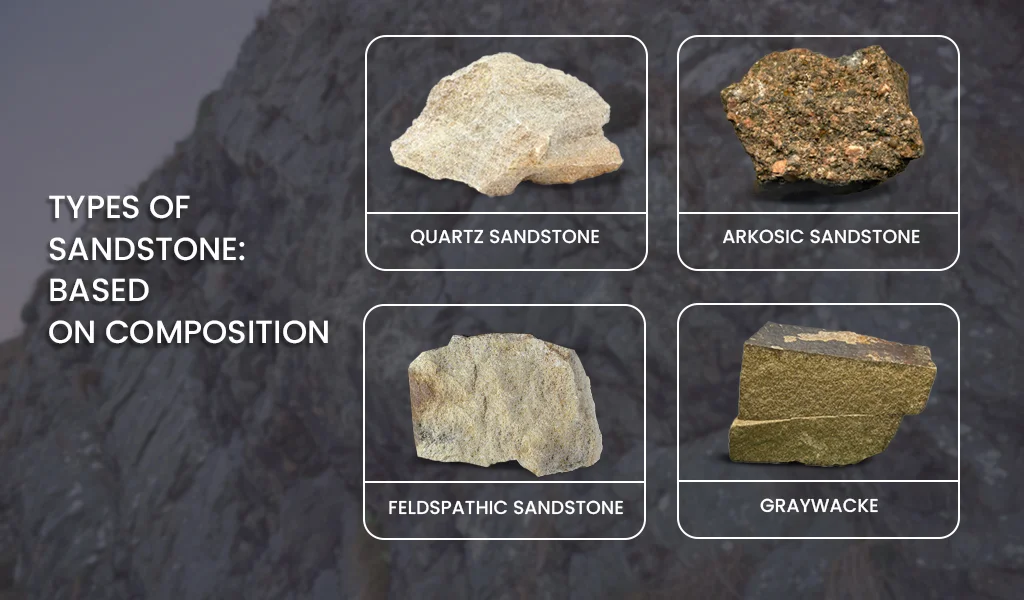
- Quartz Sandstone: One of the most common types of sandstone is quartz sandstone, which is composed mainly of quartz slabs minerals. Quartz sandstone is mainly used in the construction industry as it is a highly resistant and durable material.
- Arkosic Sandstone: Well, if you are thinking about how is sandstone formed as arkosis, then this one is formed near its source rock and contains mainly feldspar and angular grains. Among both grains, this stone contains a high percentage of feldspar.
- Feldspathic Sandstone: These sandstone materials are generally less durable as compared to quartz sandstone, as it contains more of a feldspar mineral along with quartz mineral. This sandstone formation is less durable because feldspar is a relatively softer material.
- Graywacke: To answer How does sandstone form as graywacks? then, as suggested by the name, this sandstone is formed by a mixture of rock fragments, feldspar, and quartz. This is a dark-colored sandstone formed from sediments in deep sea environments when they are frequently deposited there.
The Uses and Importance of Sandstone
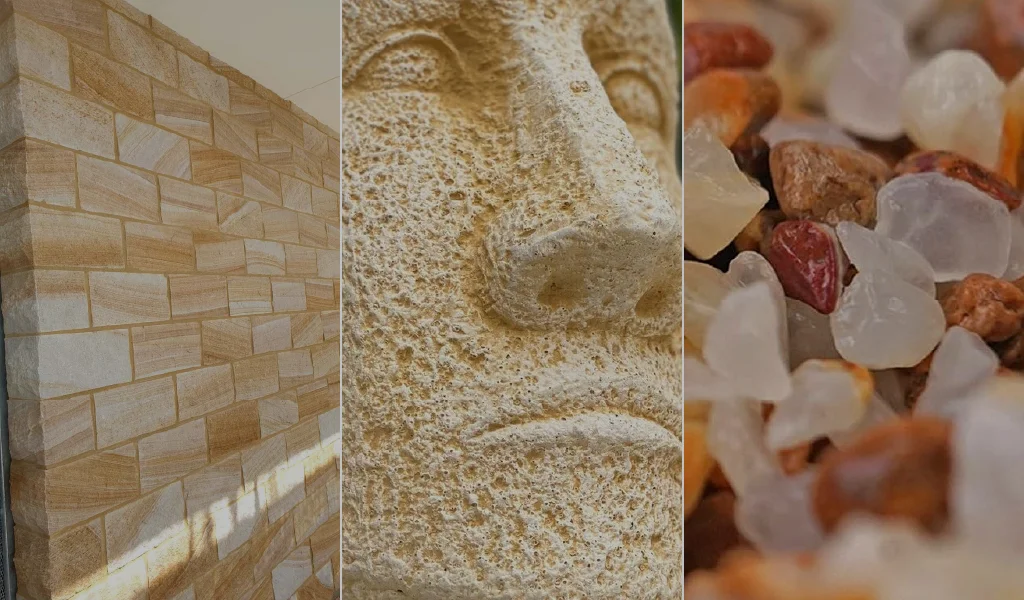
- Building materials: Some of the most common uses of sandstone are in the construction industry in both residential and commercial spaces. Sandstone formation is best suitable to be used as natural stone paving, patio material, wall cladding, and much more. It is a beautiful stone that can be used to enhance aesthetics as well.
- Sculptures and art: Sandstone formation is also an ideal medium of art and can be used in sculpture, architectural elements, and carvings. It is a porous and softer material and can easily be used to create various arts. From centuries, this material has been seen in various designs and arts around the world.
- Other uses: If you have paid attention to how sandstone forms, then you might have figured that it can be used to purify water as it is porous in nature that allows water to pass through and hold the impurities behind. We can use these filters made of sandstone in places like aquariums and well water filtration.
Conclusion
To conclude, we can say that sandstone formation is not a simple process but a series of steps that takes place under and above the earth’s crust. Sandstone is a stunningly beautiful and remarkable material that can be used in various places, industries, and sculptures from centuries now.
Buildings, structures, and works of art created using sandstone material years ago have still stood the test of time without showing any sign of wear and tear. This material’s durability, versatility, and longevity are what make it a favorable material for both designers and architects.
Whether you are an architect, a designer, or simply a curious person looking to know and gain knowledge about how is sandstone formed, then this guide is good for you to have a brief visual in mind. To know about this process in detail, we recommend going through books and articles with real-time case studies to gain deeper knowledge.
ABOUT THE AUTHOR
Purnima Kaushik is a seasoned content writer and editor with over a decade of experience in the stone and real estate industries. As a leading voice at MPG Stone, she shares insights on installment processes, project insights, design guides, and much more
Don’t Forget To Share This Post
